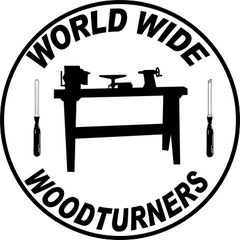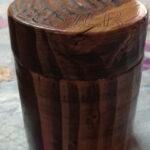- Beginners Guide to Airbrushing with Matt Harber
 If you would like your own hardcopy of this description, click here Introduction: This demonstration ...
If you would like your own hardcopy of this description, click here Introduction: This demonstration ... - Demoitus


 By Doug Miller We talk about demoitus from time to time. Often we misplace a tool or a piece of equipment doesn’t function as we expect. I’ve had those issues so many times. One thing we can never count on with no thought of miscue is the wood we are using. The saying goes something ...
By Doug Miller We talk about demoitus from time to time. Often we misplace a tool or a piece of equipment doesn’t function as we expect. I’ve had those issues so many times. One thing we can never count on with no thought of miscue is the wood we are using. The saying goes something ... - Camera Setup for filming or live demonstration


 By Jeff Walters There is this myth that if you want to do an online demo or make a YouTube video, that you need lots of expensive camera and computer gear. Well that is simply not true. Many of us that have done online demos for Worldwide Woodturners or for our respective clubs and groups have ...
By Jeff Walters There is this myth that if you want to do an online demo or make a YouTube video, that you need lots of expensive camera and computer gear. Well that is simply not true. Many of us that have done online demos for Worldwide Woodturners or for our respective clubs and groups have ... - Avoiding Barrel Distortion in Photographs


 If you’ve ever been bothered by your camera changing the shape of a piece, you may be experiencing barrel distortion. Barrel distortion is caused by the shape of the camera lens, which compresses light waves in order to focus them on the image capturing plane. Below, I intentionally held the camera very close to the subject. ...
If you’ve ever been bothered by your camera changing the shape of a piece, you may be experiencing barrel distortion. Barrel distortion is caused by the shape of the camera lens, which compresses light waves in order to focus them on the image capturing plane. Below, I intentionally held the camera very close to the subject. ... - Laser Engraving for Wood Turners ( Part 3 ) – Todd Fipps


 … Continued from March 26, 2025 Choosing Safe Materials for Engraving: Wood and Beyond Selecting the right material for laser engraving is just as important as choosing the correct machine settings. While wood is the most commonly used material for woodturners, laser engraving can also be applied to leather, acrylic, metal, glass, and more. However, ...
… Continued from March 26, 2025 Choosing Safe Materials for Engraving: Wood and Beyond Selecting the right material for laser engraving is just as important as choosing the correct machine settings. While wood is the most commonly used material for woodturners, laser engraving can also be applied to leather, acrylic, metal, glass, and more. However, ... - Laser Engraving for Wood Turners (Part 2) – Todd Fipps


 … Continued from March 19, 2025 Newsletter Health and Safety Considerations: Engraving with Confidence and Caution While laser engraving is an incredible tool for adding intricate details and personalization to wood-turned projects, it’s important to recognize that you’re working with a powerful beam of focused energy— essentially controlled fire. That means safety should always be a ...
… Continued from March 19, 2025 Newsletter Health and Safety Considerations: Engraving with Confidence and Caution While laser engraving is an incredible tool for adding intricate details and personalization to wood-turned projects, it’s important to recognize that you’re working with a powerful beam of focused energy— essentially controlled fire. That means safety should always be a ... - What Makes an Urn by Brenda Thornton


 My name is Brenda Thornton, also known as Band Aid Brenda. This name was given to me by Capt. Eddie because, for quite awhile when I first began coming to Wednesday meetings, I had a band aid. After going to a woodworking symposium where I turned a pen, I’ve been turning about 5 yrs now. ...
My name is Brenda Thornton, also known as Band Aid Brenda. This name was given to me by Capt. Eddie because, for quite awhile when I first began coming to Wednesday meetings, I had a band aid. After going to a woodworking symposium where I turned a pen, I’ve been turning about 5 yrs now. ...
If you have a tips or tricks article you would like published, please let us know. We would love to publish it on our site. Let us know or send us a copy below:






